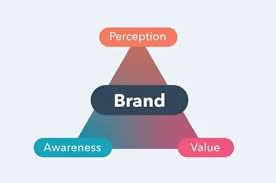Conducting brand perception surveys and analyzing customer feedback is essential for gaining insights into how your brand is perceived by your target audience. Here are some steps to effectively conduct brand perception surveys and analyze customer feedback:
- Define your Objectives: Clarify the specific goals and objectives of your brand perception survey. Determine the specific aspects of your brand’s personality or reputation that you want to assess. For customer feedback analysis, identify the key areas or touchpoints where you want to gather feedback.
- Develop Survey Questions or Feedback Channels: Design survey questions that align with your objectives. For brand perception surveys, include questions that explore aspects such as brand personality traits, brand associations, brand positioning, and overall brand perception. For customer feedback, provide channels such as online forms, email surveys, or feedback cards at physical locations.
- Choose the Right Sample and Method: Determine the target audience for your survey or feedback analysis. Select a representative sample that reflects your customer base or the audience you want to assess. Decide on the survey delivery method, such as online surveys, phone interviews, or in-person interactions, based on the preferences and characteristics of your target audience.
- Ensure Survey Validity and Reliability: Ensure that your survey questions are clear, unbiased, and relevant to the objectives. Consider using standardized scales or Likert-type scales to measure perceptions consistently. Pilot test the survey with a small group to identify any issues or areas for improvement before launching it on a larger scale.
- Collect and Analyze Data: Implement your survey or feedback collection process and gather the responses. For brand perception surveys, analyze the quantitative data using statistical tools to identify patterns, trends, and correlations. For customer feedback analysis, categorize and code the feedback to identify common themes, sentiments, and areas of satisfaction or improvement.
- Interpret and Draw Insights: Interpret the survey results and customer feedback to gain meaningful insights about your brand’s perception. Look for patterns, differences across demographic segments, or changes over time. Identify strengths, weaknesses, opportunities, and potential areas for improvement in relation to your brand’s personality or customer experience.
- Take Action and Iterate: Based on the insights gained, develop actionable strategies to enhance your brand’s personality or address any issues identified. Implement changes in messaging, communication, product/service offerings, or customer experience based on the findings. Continuously monitor brand perception and customer feedback to track progress and make iterative improvements.
- Communicate Findings and Actions: Share the findings of your brand perception surveys and customer feedback analysis with relevant stakeholders, such as internal teams or decision-makers. Communicate the actions you plan to take based on the insights gained. Transparency and communication demonstrate your commitment to addressing concerns and improving the brand experience.
Remember, brand perception surveys and customer feedback analysis should be conducted periodically to track changes over time and ensure that your brand remains aligned with the evolving needs and preferences of your target audience.
SHARE
